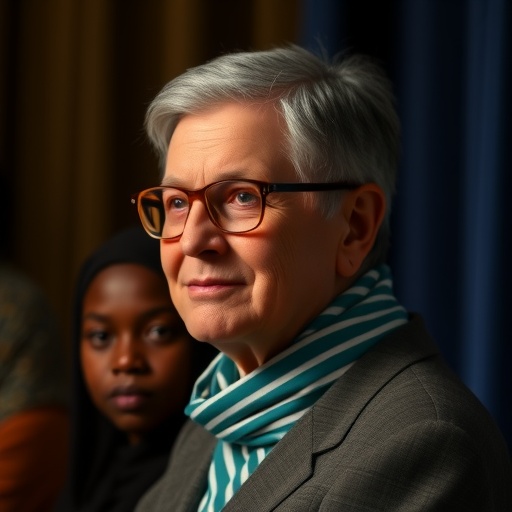The World Health Organization (WHO), the leading global public health agency, is facing a profound challenge as its priorities and strategies become increasingly shaped by external donor influence. A recent investigation published in BMJ Global Health delves into the intricate financial relationship between WHO and major donors such as the Bill and Melinda Gates Foundation, revealing a skewed allocation of resources that raises critical questions about the organization’s autonomy and its ability to address the full spectrum of global health needs.
Over the past quarter-century, data reveals that more than half of the Gates Foundation’s US$5.5 billion in donations to WHO has been earmarked for vaccine-centric initiatives and polio eradication efforts. This targeted funding contrasts sharply with the relative neglect of other pressing health challenges that WHO identifies as strategic priorities. Such a financial focus not only narrows the scope of WHO’s interventions but also potentially sidelines emerging and critical health issues demanding urgent attention.
The Gates Foundation, currently the second-largest contributor to WHO’s revenue streams—accounting for 9.5% of its total funding between 2010 and 2023—plays a decisive role in shaping the organization’s agenda. While the United States remains WHO’s largest funder, recent developments, including the U.S. government’s announced withdrawal from WHO as of January 2026, signal a future where the organization’s financial stability could be jeopardized further. Compounding this uncertainty, Germany and the United Kingdom rank as the third and fourth largest donors, respectively, though their funding patterns differ in scope and intent.
Notwithstanding the considerable influence held by these donors, a paucity of rigorous investigations into how such funds are specifically allocated within WHO programs has existed. The present analysis stands as one of the first systematic efforts to track and quantify the Gates Foundation’s grants to WHO from 2000 through 2024. By extracting comprehensive grant data directly from the Foundation’s records, researchers meticulously cataloged 640 grants totaling $5.5 billion to WHO, revealing nuanced insights into funding priorities and discrepancies.
A striking finding is that over 80% of the Foundation’s grants to WHO, totaling approximately $4.5 billion, have been targeted at infectious diseases, with nearly 60% specifically focusing on polio eradication. Vaccine programs, a substantial component of these efforts, accounted for more than half of the Gates funding at roughly $2.9 billion. Such concentrated investments underscore a donor preference towards traditional infectious disease interventions, often at the expense of addressing broader health system capacities or chronic, non-communicable diseases.
In stark contrast, important areas such as non-communicable diseases (NCDs), which WHO identifies as accounting for 74% of global deaths with the highest burden in low- and middle-income countries, receive negligible Gates Foundation funding through WHO. Specifically, less than 1% of the Foundation’s dollars supported NCD initiatives. Similarly, water and sanitation projects and health systems strengthening together constituted mere fractions of the total, with just $11.8 million (0.2%) and $37.4 million (0.7%) allocated, respectively. This reveals a disconnect between donor priorities and the comprehensive health needs outlined in WHO’s strategic framework.
The financial architecture of WHO further compounds these challenges. The organization’s revenue is bifurcated into assessed contributions from member states—which are calculated based on a country’s wealth and population—and voluntary contributions or extra-budgetary funds from both member states and non-state actors. Notably, approximately ninety percent of WHO’s income consists of voluntary contributions, nearly all of which come with earmarking conditions. These stipulations allow donors to dictate the usage of funds, effectively steering the organization’s program implementation and goal setting.
This earmarked funding model constrains WHO’s operational flexibility, forcing a prioritization of donor interests over its own strategic vision. According to the study authors, insufficient assessed contributions have compelled WHO to accept earmarked donations, thereby skewing resource allocation disproportionately towards projects favored by major donors while underfunding vital, though less glamorous, areas. Such a system risks perpetuating imbalances and undermines the efficacy of global health initiatives, particularly for emerging health threats.
The implications of this funding dependence are particularly pressing given the potential exit of the United States, WHO’s largest funding source. Should the withdrawal proceed as scheduled in 2026, WHO’s already precarious reliance on voluntary, earmarked contributions will intensify. The consequent funding vacuum could exacerbate governance challenges and further restrict WHO’s ability to implement a balanced and evidence-informed health agenda responsive to evolving global health dynamics.
Critical reflection on the role of non-state actors such as the Gates Foundation also tempers the narrative. While it is easy to fault these donors for wielding disproportionate influence—potentially undermining WHO’s independence—this study rightly highlights the role of member states in perpetuating the status quo. For over four decades, governments have resisted increasing assessed contributions commensurate with the scale and complexity of WHO’s mission, effectively transferring power to donors through structural underfunding.
WHO has long advocated for a fundamental reconfiguration of its financing framework, calling for increased flexible and sustainable funding that aligns with strategic priorities rather than donor-driven projects. Without such reforms, the organization risks remaining hostage to external interests, hampering its capacity to comprehensively address the multifaceted challenges that define modern global health crises. The study’s findings serve as a stark reminder that sustainable global health leadership hinges not only on resources but on preserving institutional independence through sound and equitable financing mechanisms.
In a world grappling with interconnected health threats—ranging from pandemics to the rising tide of chronic diseases—ensuring WHO’s financial model facilitates rather than constrains its mandate is paramount. As global health governance enters an era marked by geopolitical shifts and emerging priorities, the lessons drawn from this study underscore the urgent need for member states to reaffirm their commitments and for WHO to reclaim its role as an impartial steward for all facets of global health.
Subject of Research: Not applicable
Article Title: Who’s leading WHO? A quantitative analysis of the Bill and Melinda Gates Foundation’s grants to WHO, 2000-2024
News Publication Date: 28-Oct-2025
Web References: http://dx.doi.org/10.1136/bmjgh-2024-015343
Keywords: Health and medicine, Health care policy, Research priorities




